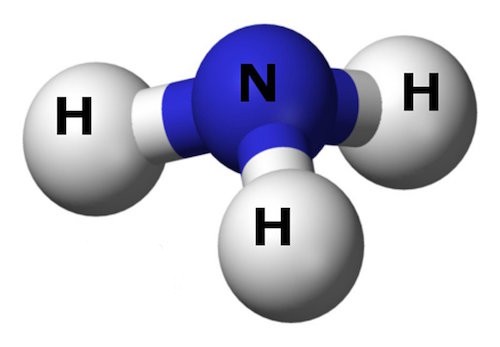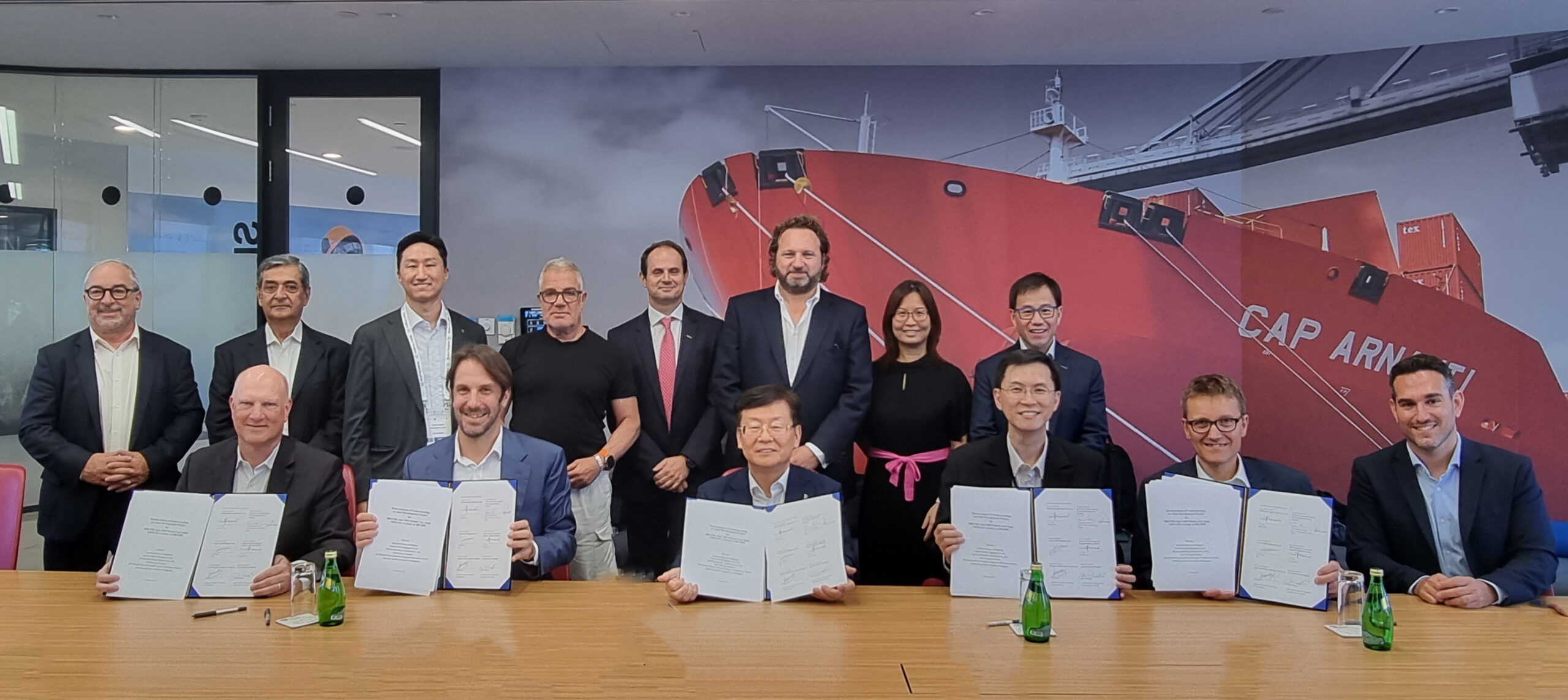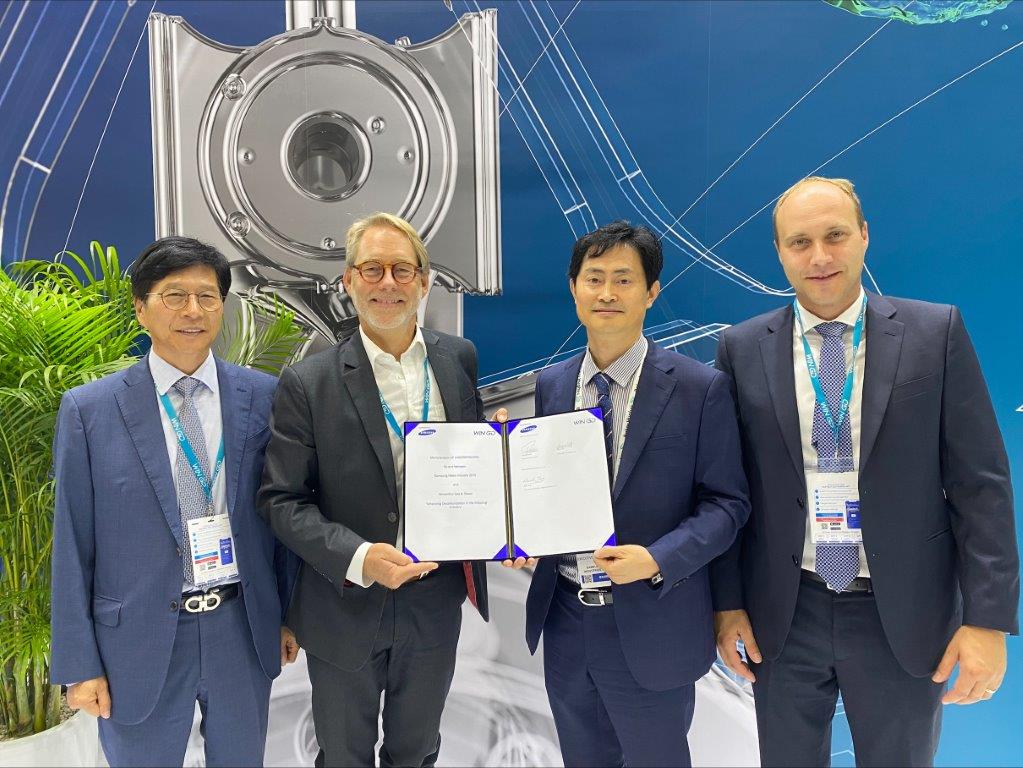NoGAPS project to prove technical and operational feasibility of ammonia supply chain for deepsea ammonia powered commercial vessel
An industry driven project to prove the feasibility of a large ammonia-powered deep sea vessel has been launched by Copenhagen-based consortium, the Global Maritime Forum. The Nordic Green Ammonia Powered Ships (which gives the very marketing friendly acronym NoGAPS) project is backed by a range of the region’s businesses. Funded by Nordic Innovation, its partners include Danish Ship Finance, shipowner J.Lauritzen, engine maker MAN Energy, Ørsted the energy group, and consultancy group Fürstenberg Maritime Advisory, all in Denmark, along with Oslo-based bank DNB, the class society DNV GL, and chemical group Yara International, and then Helsinki-listed Wärtsilä.
In 2019 the Global Maritime Forum (formerly Danish Maritime Forum) launched its getting to zero coalition with the proposed aim of proving a large commercial ocean going vessel capable of being powered by zero emission fuels by 2030, although this does not necessarily mean zero emissions from ships if fuels can be manufactured using renewable electricity sources.
The Getting to Zero Coalition now has over 90 companies that have signed up to the alliance, meaning they are willing to put effort into finding a pathway towards what the Global Maritime Forum calls a moon-shot ambition.
This new project aim is to address challenges to ammonia adoption throughout the entire (fuel) supply chain, and to focus on cross-sector collaboration to overcome them, wrote GMF staff in a recent Linked-In post.
Fürstenberg Maritime Advisory’s Sofia Fürstenberg Stott told Fathom World that the NoGAPS project is looking across the whole fuel generation supply chain from the offshore wind power producer to the green ammonia consumer, to support the commercial viability of an ammonia powered vessel, most likely an ammonia carrier.
“It’s about finding the break-even point for the businesses as well as for the environment, taking a holistic perspective, looking to enable rules and regulations, policies, novel financing and risk & reward sharing, and to build from there,” she wrote.
A to Z: A is for Ammonia

NoGAPS is not the only project looking at ammonia as a fuel. In Norway and France there are already some projects assessing the use of ammonia powered fuel cells, such as the EU -funded ShipFC project, but these are generally aimed at smaller vessels than the design the NoGAPS consortium is addressing.
As ammonia (NH3) does not contain a carbon molecule its combustion can not create CO2. But while it is toxic as a liquid and gas, it can be stored as a liquid in dedicated bunker tanks and used as what is called a hydrogen carrier. Its combustion with oxygen produces energy.
and A is for Agnostic
Talking during the recent Green Ship Technology event in Copenhagen GMF head of research Kasper Søgaard said that the overall goal of the coalition was to prove a scalable business case for new fuels, pointing to the need for strong collaboration with the energy supply as shipping will need to rely heavily on the energy industry to develop the fuels.
He pointed to a recent study from UMAS, the consultants associated with University College London, that suggested only 13% of investments needed to answer the transitions needs are tied to ships, most are in the energy production side. he UMAS study focused largely on ammonia. This cost, said Søgaard, is tied to Hydrogen production through reformation of natural gas using carbon capture and storage, or from renewable electricity, and then turning hydrogen into ammonia and then having the bunkering and transport infrastructure built.
While the recent project announcement is focusing on a potential ammonia powered ammonia carrier (that would then allow for the expert of clean energy to help Denmark meet its own national goals Søgaard said that the overall goal of the coalition is solution agnostic.
“The ambition of the coalition is to have commercially viable, zero emission vessels operating among deep sea trade routes by 2030, supported by the necessary infrastructure for scalable net zero carbon energy sources, including the production, distribution, storage and bunkering”, he said, saying that the focus is on the total value chain for the fuel.
“It is about commercial viability. It is not that difficult to build a ship that can run on zero carbon fuels. Just give engineers enough money and they can have that ready for you in a couple of years’ time. The big challenge is to do it as a commercially viable thing, where you do that as a business investment, and not just because you want to prove that it can be done or you have a lot of government subsidies in your bank.”
Kasper Søgaard, Global Maritime Forum
“It is about commercial viability. It is not that difficult to build a ship that can run on zero carbon fuels. Just give engineers enough money and they can have that ready for you in a couple of years’ time. The big challenge is to do it as a commercially viable thing, where you do that as a business investment, and not just because you want to prove that it can be done or you have a lot of government subsidies in your bank.”
He pointed to the need for a focus on a resilient fuel supply chain where whatever solutions are chosen there is a reliable supply for deep sea international shipping.
Z is for Zero, or not.
But zero emission is not always zero emissions. Some fuels in the future may produce CO2 when burnt on the ship advised Søgaard.
“When we talk about zero carbon energy sources it is kind of a misnomer because some of the potential fuels actually contain carbon molecules”, he said.
“But if they’re derived from zero carbon electricity, from biomass, or fossil fuels coupled with CCS, they are fine, so the approach is technological neutrality, the key is scalability.
“Will there be enough to go round?” he asked, also pointing to the fact that the creation of some fuels that produce zero emissions on the ship, may indeed produce more carbon dioxide or other greenhouse gases during their production than a ship would produce if burning a normal bunker fuel.


































